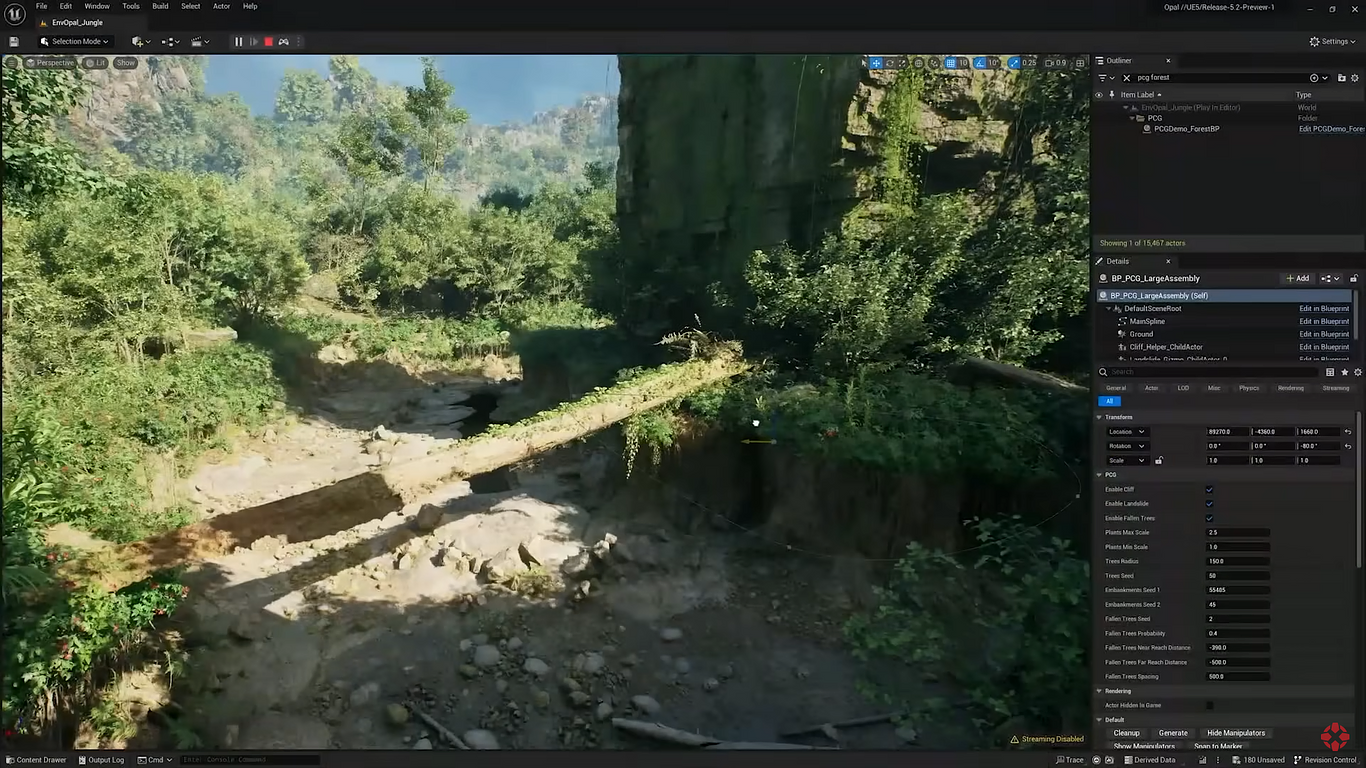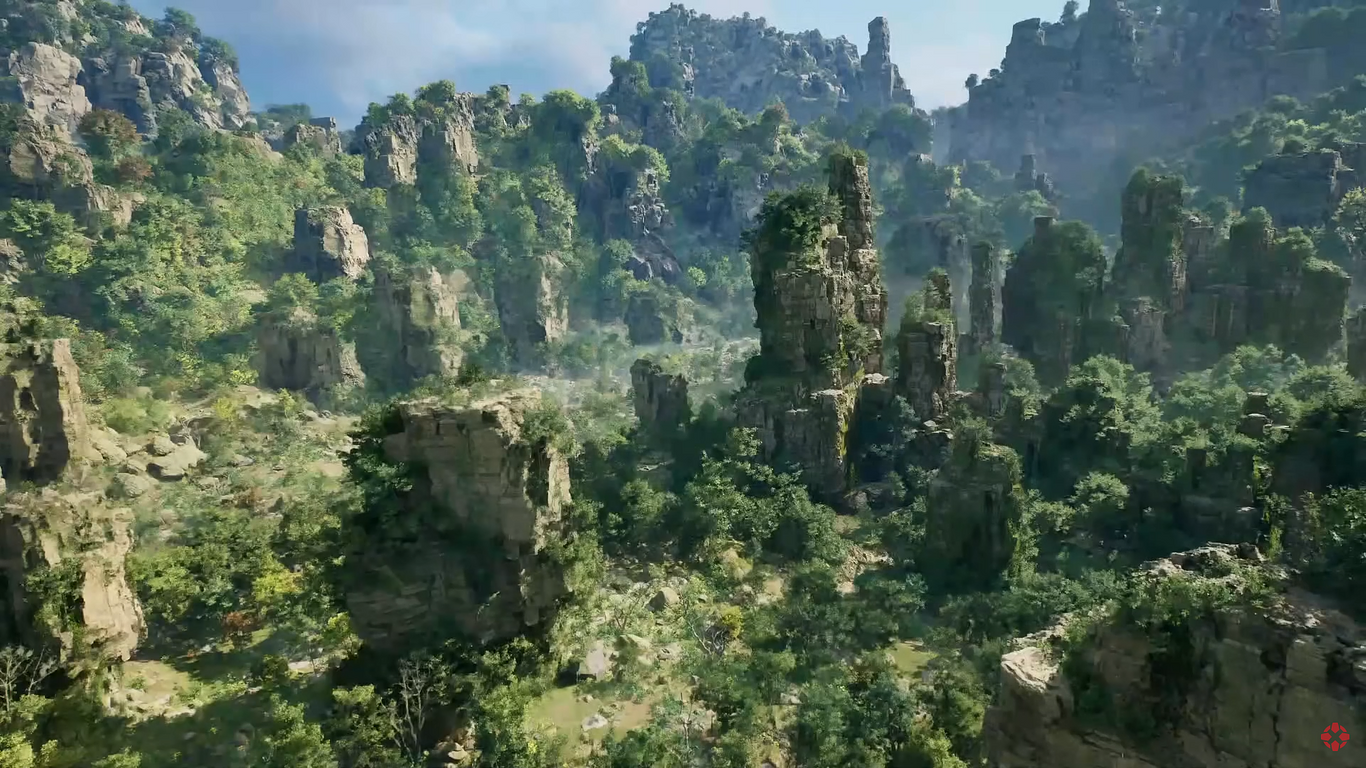
Industry News
State of Unreal 2024
The digital horizon of architectural visualization (archviz) has expanded with the announcement of Unreal Engine 5.4 (UE5.4) at the State of Unreal 2024. This update is not just another iteration; it's a significant leap forward, promising to redefine the boundaries of realism, performance, and creativity in archviz. Here's how the latest features and enhancements in UE5.4 are set to transform the architectural visualization industry.
Enhanced Rendering Capabilities: The Foundation of Photorealism
At the heart of any archviz project is the quest for photorealism—creating digital environments that are indistinguishable from the real world. UE5.4 introduces advancements in rendering technologies, such as Nanite tessellation and volumetric effects, which are game-changers for archviz professionals. These features allow for the creation of incredibly detailed, dynamic, and atmospheric environments. Imagine crafting a scene with realistic lighting that shifts throughout the day, casting natural-looking shadows and reflections. The addition of local fog volumes can add depth and ambiance to interior spaces, making them feel alive and lived-in.
Performance Improvements: Making Real-time Visualization a Reality
UE5.4 doesn't just push the envelope in terms of visuals; it also boasts significant performance improvements. With faster ray tracing, variable rate shading, and improved instance culling, architects and designers can now develop and interact with complex scenes more fluidly. This reduction in render times and increase in overall efficiency makes real-time walkthroughs and client presentations more feasible and impressive. For instance, demonstrating how natural light interacts with a building's interior throughout different times of the day can now be a seamless experience, enhancing client engagement and understanding of the project.
At the heart of any archviz project is the quest for photorealism—creating digital environments that are indistinguishable from the real world. UE5.4 introduces advancements in rendering technologies, such as Nanite tessellation and volumetric effects, which are game-changers for archviz professionals. These features allow for the creation of incredibly detailed, dynamic, and atmospheric environments. Imagine crafting a scene with realistic lighting that shifts throughout the day, casting natural-looking shadows and reflections. The addition of local fog volumes can add depth and ambiance to interior spaces, making them feel alive and lived-in.
Performance Improvements: Making Real-time Visualization a Reality
UE5.4 doesn't just push the envelope in terms of visuals; it also boasts significant performance improvements. With faster ray tracing, variable rate shading, and improved instance culling, architects and designers can now develop and interact with complex scenes more fluidly. This reduction in render times and increase in overall efficiency makes real-time walkthroughs and client presentations more feasible and impressive. For instance, demonstrating how natural light interacts with a building's interior throughout different times of the day can now be a seamless experience, enhancing client engagement and understanding of the project.
Revolutionary Animation Systems: Bringing Spaces to Life
Archviz is not just about static beauty; it's about conveying the feel of a space, its functionality, and how people interact with it. UE5.4's overhaul of animation systems, particularly the introduction of motion matching technology, allows for more natural and realistic animation of characters within a space. This means that architects and designers can create more dynamic presentations, showcasing how individuals might move through and interact with different environments, from navigating office spaces to enjoying public parks. This layer of interaction can significantly enhance the storytelling aspect of architectural presentations, making them more compelling and immersive.
Procedural Content Generation: A Tool for Creativity and Efficiency
The procedural content generation (PCG) framework in UE5.4 opens new doors for creativity and efficiency in archviz. This tool allows designers to automate the creation of detailed and varied environments, from landscapes surrounding a project to diverse urban textures. By setting up parameterized rule sets, designers can quickly iterate on designs, experiment with different scenarios, and create more immersive environments. This not only saves valuable time but also encourages exploration and creativity, enabling designers to push the boundaries of traditional architectural visualization.
Cross-Platform Optimization: Broadening the Reach of Archviz
With the ever-growing demand for mobile and web-based visualization tools, UE5.4's focus on cross-platform optimization is particularly relevant for the archviz community. By improving performance across all platforms, including mobile, Unreal Engine ensures that architectural visualizations are more accessible and can reach a wider audience. This democratization of archviz not only benefits clients and stakeholders but also opens up new markets and opportunities for architects and designers.
Conclusion
Unreal Engine 5.4 is setting a new standard for architectural visualization. Its enhanced rendering capabilities, performance improvements, revolutionary animation systems, procedural content generation, and cross-platform optimization are collectively pushing the boundaries of what's possible in archviz. As we move forward, the ability to create more realistic, interactive, and immersive environments will undoubtedly change the way architects and designers communicate their visions, making the built environment more accessible and understandable to everyone involved. With UE5.4, the future of architectural visualization is not just bright; it's Unreal.
Archviz is not just about static beauty; it's about conveying the feel of a space, its functionality, and how people interact with it. UE5.4's overhaul of animation systems, particularly the introduction of motion matching technology, allows for more natural and realistic animation of characters within a space. This means that architects and designers can create more dynamic presentations, showcasing how individuals might move through and interact with different environments, from navigating office spaces to enjoying public parks. This layer of interaction can significantly enhance the storytelling aspect of architectural presentations, making them more compelling and immersive.
Procedural Content Generation: A Tool for Creativity and Efficiency
The procedural content generation (PCG) framework in UE5.4 opens new doors for creativity and efficiency in archviz. This tool allows designers to automate the creation of detailed and varied environments, from landscapes surrounding a project to diverse urban textures. By setting up parameterized rule sets, designers can quickly iterate on designs, experiment with different scenarios, and create more immersive environments. This not only saves valuable time but also encourages exploration and creativity, enabling designers to push the boundaries of traditional architectural visualization.
Cross-Platform Optimization: Broadening the Reach of Archviz
With the ever-growing demand for mobile and web-based visualization tools, UE5.4's focus on cross-platform optimization is particularly relevant for the archviz community. By improving performance across all platforms, including mobile, Unreal Engine ensures that architectural visualizations are more accessible and can reach a wider audience. This democratization of archviz not only benefits clients and stakeholders but also opens up new markets and opportunities for architects and designers.
Conclusion
Unreal Engine 5.4 is setting a new standard for architectural visualization. Its enhanced rendering capabilities, performance improvements, revolutionary animation systems, procedural content generation, and cross-platform optimization are collectively pushing the boundaries of what's possible in archviz. As we move forward, the ability to create more realistic, interactive, and immersive environments will undoubtedly change the way architects and designers communicate their visions, making the built environment more accessible and understandable to everyone involved. With UE5.4, the future of architectural visualization is not just bright; it's Unreal.
You must be logged in to post a comment. Login here.
About this article
The digital horizon of architectural visualization (archviz) has expanded with the announcement of Unreal Engine 5.4 (UE5.4) at the State of Unreal 2024. This update is not just another iteration; it's a significant leap forward, promising to redefine the boundaries of realism, performance, and creativity in archviz. Here's how the latest features and enhancements in UE5.4 are set to transform the architectural visualization industry.
visibility341
favorite_border0
mode_comment0







